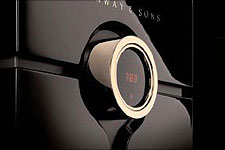It’s the time of year for saving money!

A longtime acquaintance asked me a rather pointed question recently,
“Don’t you miss reviewing super-expensive gear?” My answer surprised him. “No,”
I said, “I actually prefer reviewing ‘budget-priced’ audio components because
they have a much greater impact on the industry.” His eyebrows went up, as most
likely yours did, too. Most audiophiles assume that everyone who wants to own a
great-sounding system does it by “upgrading” and moving inexorably up the price-point
ladder. Most reviewers are also susceptible to these natural audiophile urges
to move onward and upward. But I prefer to go sideways and stay in the mid-priced
and budget price ranges because that’s where the most profound and far-reaching
sonic gains happen.
I don’t think it takes as much skill to design a
hyper-expensive component as it does to design one under budget constraints.
Why? Because when they have an unlimited budget designers don’t have to think
about what is the most cost-effective way to solve a technical problem, be it
jitter rejection, EMI noise suppression, or any one of a dozen other sonic
issues involved in the design process. The goal of cost-effective audio design
is to identify which sonic problems are more audible as well as which are more
cost effective to solve.
Budget components are far more interesting from a technical
point of view because the designer or designers had to weigh all their sonic
options to come up with the best product for the price. Often they are faced
with a series of either/or design decisions “If I put premium parts HERE will
it make more of a sonic difference than if I put them THERE, because I can’t
afford to put them both places.” Analyzing what parts and circuits will give
the end user the most sonic and ergonomic value is how designers earn their
keep. I see far more of this kind of effective sonic design in mid-priced and
budget components than I do in hyper-expensive models. For me, this middle of
the high-end market is where the technical action is. It’s where products are
being created that advance the state-of-the art, so people on modest budgets
can have the life-affirming experience of listening to music through a
top-flight sound reproduction system. And for me, that’s what high-end audio is
really is all about.





